Southern New Mexico is a harsh desert environment. The winds whip by at intensities provoking an early warning system for dust storms and sun protection is warranted even in the winter. Yet, scrappy people have lived and even thrived in this area for generations. Some stay. Some move on. A bit of both is found in Shakespeare Ghost Town, the remains of a thriving mining town now passed down through a family of caretakers and conservationists.
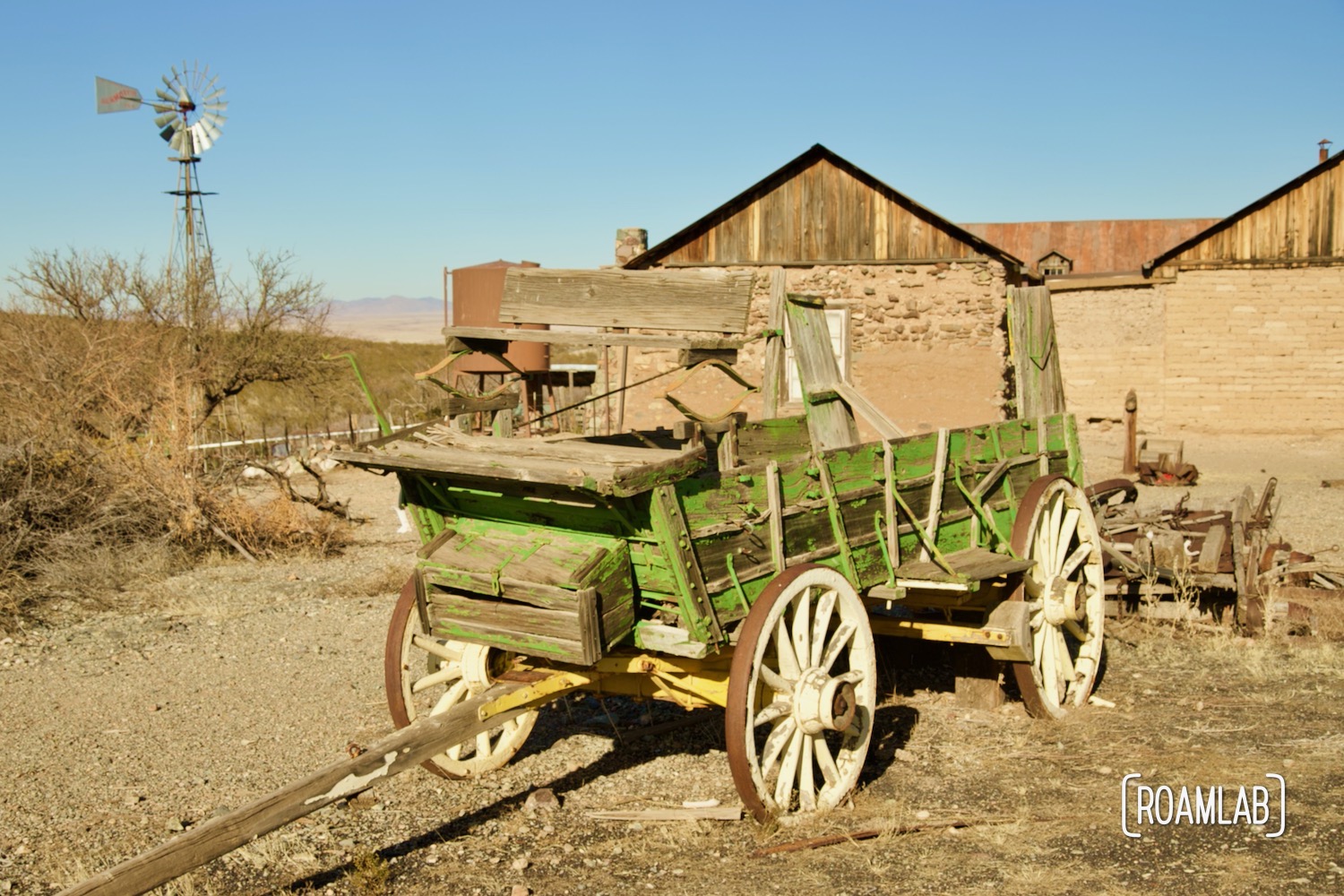
History of Shakespeare
In the desert that is southwest New Mexico, this particular spot of land offered one notable thing: a reliable spring. Long before European explorers explored the region, native tribes came to the spring and left evidence of their daily lives in metates* that dot the landscape. When scouting out a location for a military mail relay station between Fort Thorn and Fort Buchanan around 1856, this spring made for a logical location and the original structures around Shakespeare. The relay station expanded to become a stagecoach station known as Mexican Springs. “Shakespeare” was yet to come.
Silver Boom of 1870
In 1870, prospectors discovered silver outcroppings on a nearby ridge. The boomtown that quickly erupted was named Ralston City, after William Ralston, President of the Bank of California, who financed much of the early development of the mines. Even so, the town boomed and busted within the three years it took miners to consume the easily accessible silver. At its height, the town reached a population of 3000 people.
Many stayed on despite the dwindling silver due to reports of diamonds nearby. According to the rumors, Lee’s Peak, just west of town was rich in the glittering rocks. Unfortunately for the hopeful hangers-on, this was a common swindle of the time. Prospectors would “salt” a mine by spreading raw diamonds around a site purported to be a promising deposit. The hoaxers would then raise money from investors to develop the mine but pocket the funds instead. When the hoax was exposed in 1872, it was not only the death of the “diamond mine” but also the town. Ralston City collapsed as most of its population moved on to more promising prospects.
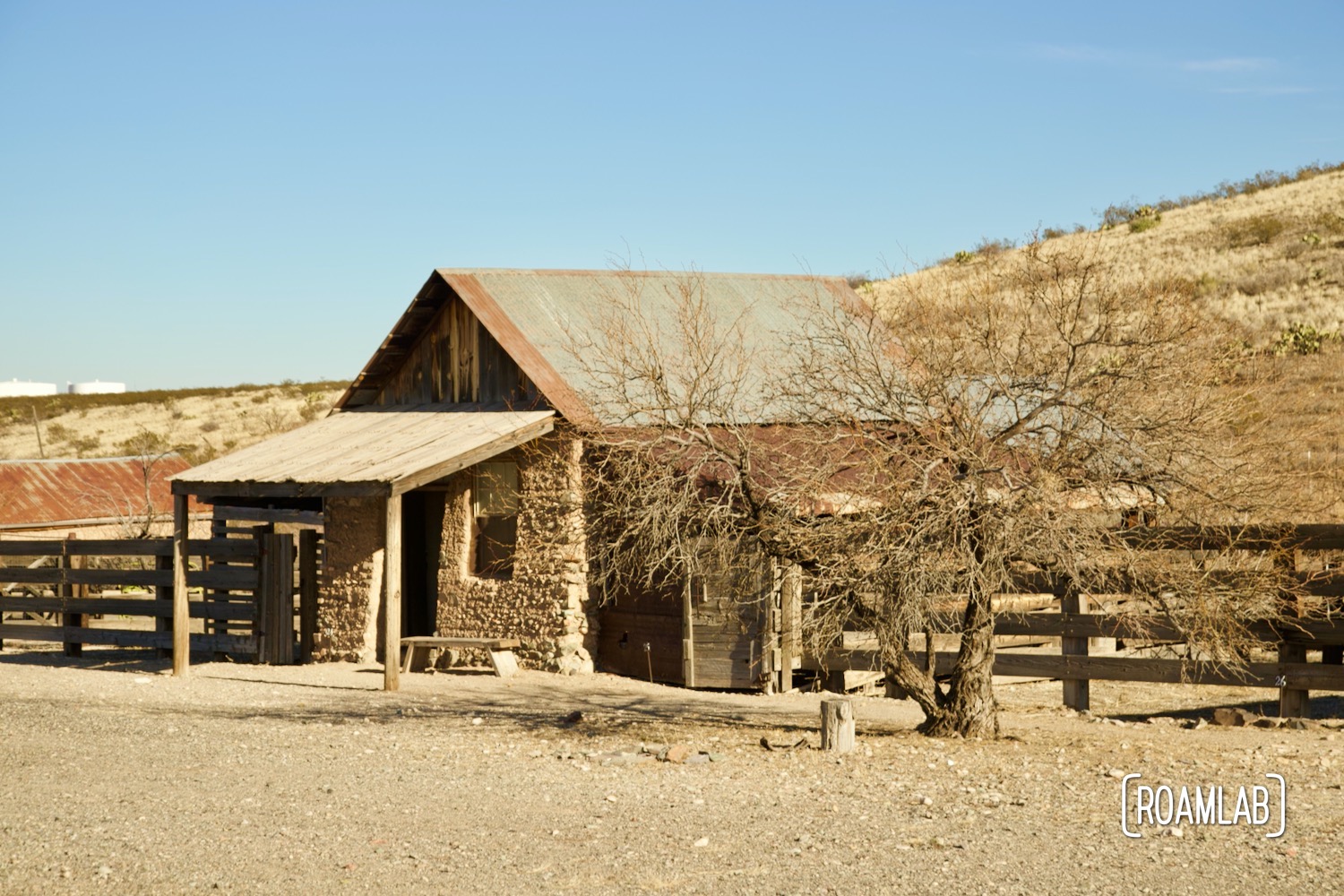
The Second Silver Boom of 1879
But there was still silver in them thar hills. Reaching the deeper silver ore would take specialized (read: heavy) equipment that could not easily be transported to the remote Ralston City. At least, not in 1872. But in 1879, Colonel William G. Boyle knew something many others did not: the railroad was coming. Boyle bought up all the good mining claims and renamed the area Shakespeare, to rid the region of its swingling reputation. The new name came with winks to The Bard such as the Stratford Hotel located on Avon Street.
With financing from St. Louis and equipment from the new railway, the Shakespeare Gold and Silver Mining and Milling Company ushered in a second mining boom in Shakespeare. But mining deep deposits of silver is expensive, and the US shift to the gold standard sounded the death knell of silver mining in the area.
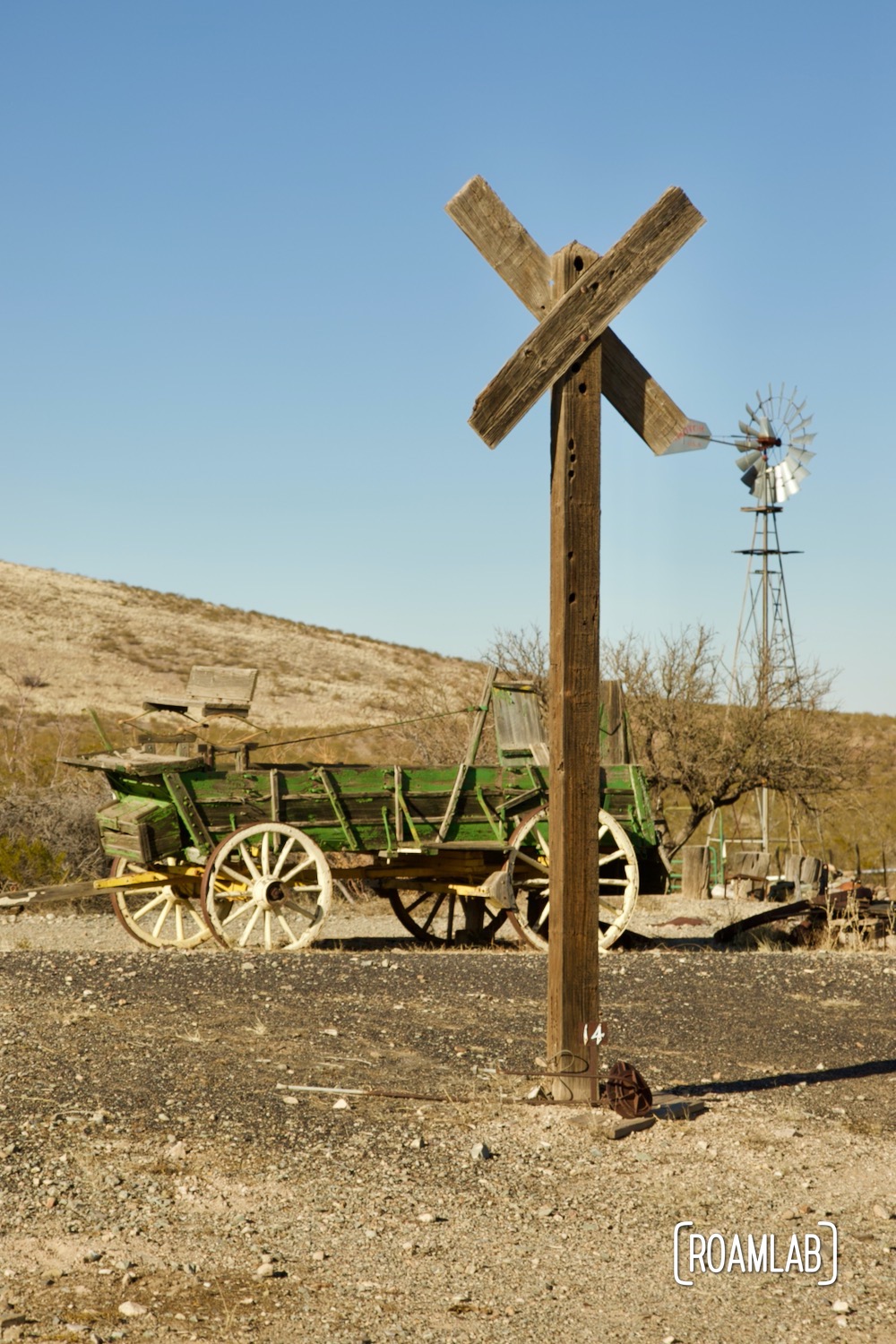
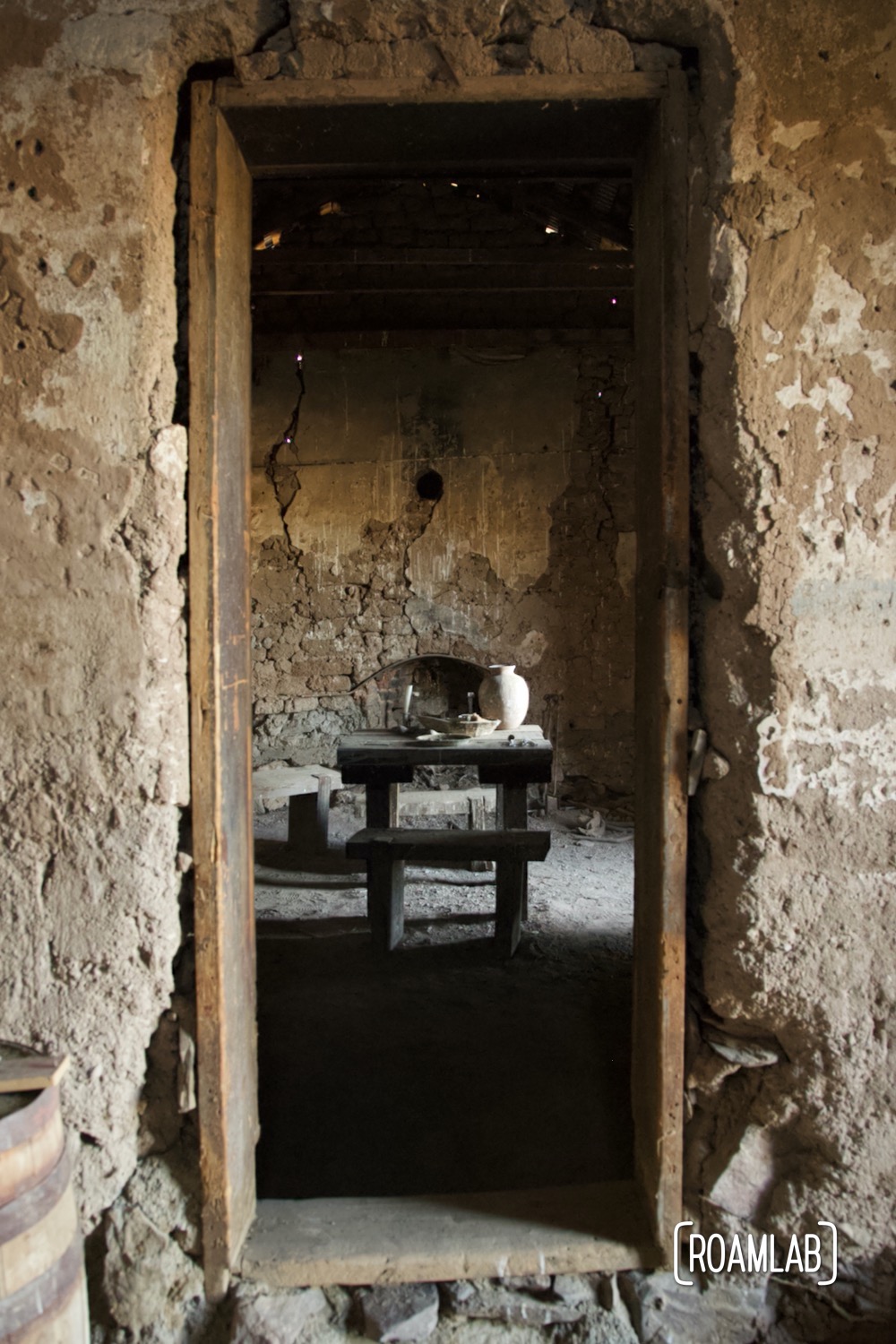
Copper Boom of 1907
Even so, mining was not completely done. In 1907, a copper mine south of Shakespeare opens and miners move back into the abandoned structures. But as the copper petered out, so does the town’s population. This time, though, it’s for good. There are no more mining booms to resuscitate the town
Instead, in 1935, Frank and Rita Hill buy the town and all its buildings to develop a ranch. While parts of the town are repurposed into homes and storage, the family also lovingly preserves many of the historic structures. In 1970, Shakespeare is designated a National Historic Site. While the ownership of the land has been passed down the generations even to today, the family shares this piece of history with the public as part of daily tours.
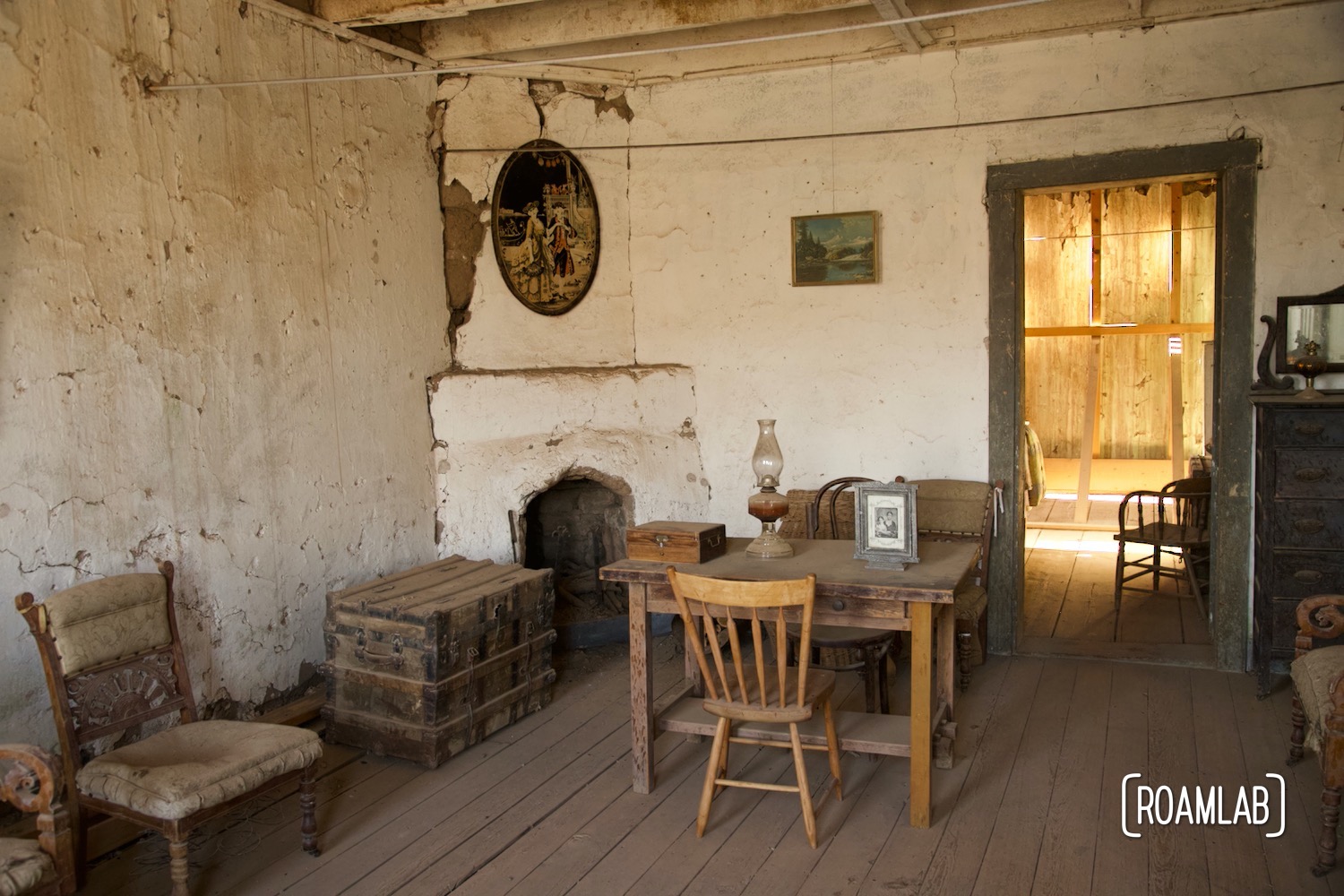
Touring Shakespeare Ghost Town
Today, Shakespeare may be a ghost town but people still regularly walk the streets in guided tours. The guides lead visitors through several of the major buildings, sharing stories of the people who lived here and the rise and fall of the town. Much of the structures are original with antiques original to the community or at least of the period.
Shakespeare’s tour guides are passionate about the ghost town and wells of information. But living in a relatively remote corner of New Mexico, there isn’t the dense schedule of tours that you might have experienced at bigger-scale attractions. Call ahead to confirm when tours are occurring at Shakespeare.
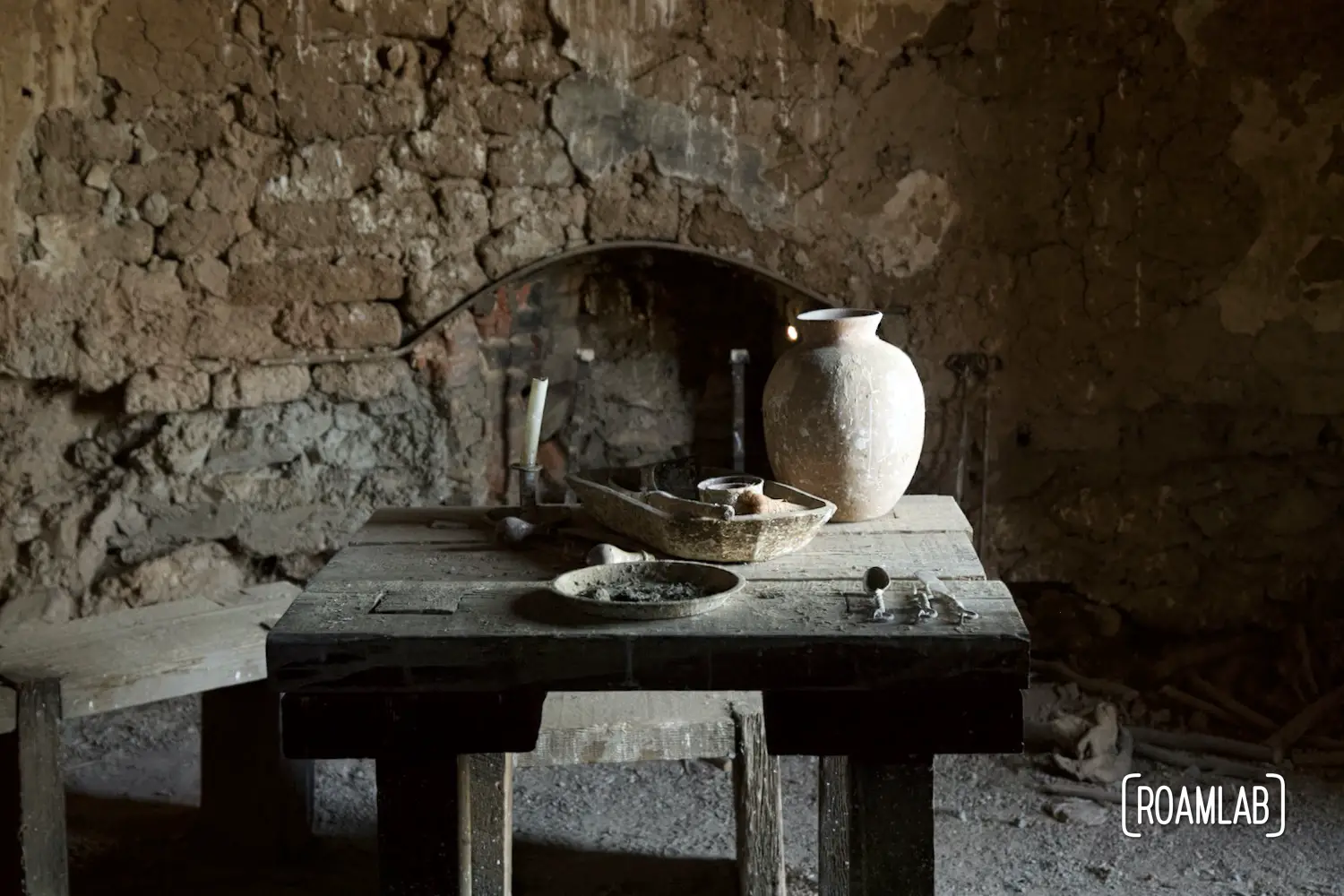
Staying at Shakespeare Ghost Town
Visitors can not only tour the remains of Shakespeare but stay overnight, provided they come with the proper arrangements. Shakespeare is part of Harvest Host, an RVing community that connects farms, wineries, breweries, museums, and other attractions that have excess parking with RVers looking for a place to spend the night. It’s a mutually beneficial arrangement where RVers have a place to park with the understanding that the RVers will spend money with their host, whether that is buying some produce, a flight of wine, beer, a tour, or whatever else may be on offer.
We spend the night at Shakespeare, having arrived early enough to take their last tour of the day. We share the lot (and the tour) with two other RVs of visitors and then settle in for the night. Like most Harvest Hosts, Shakespeare offers only a place to park. There are no hookups or special amenities. It is a stopover rather than a campground for extended stays. But we have our fill of history and a good night’s rest. So, we are happy and ready to move on the next morning.
* Metates are depressions in stones used for grinding grains into meal. Local tribes used metates to grind mesquite beans





Thanks for the history. I put this on my places to go list 👍👍